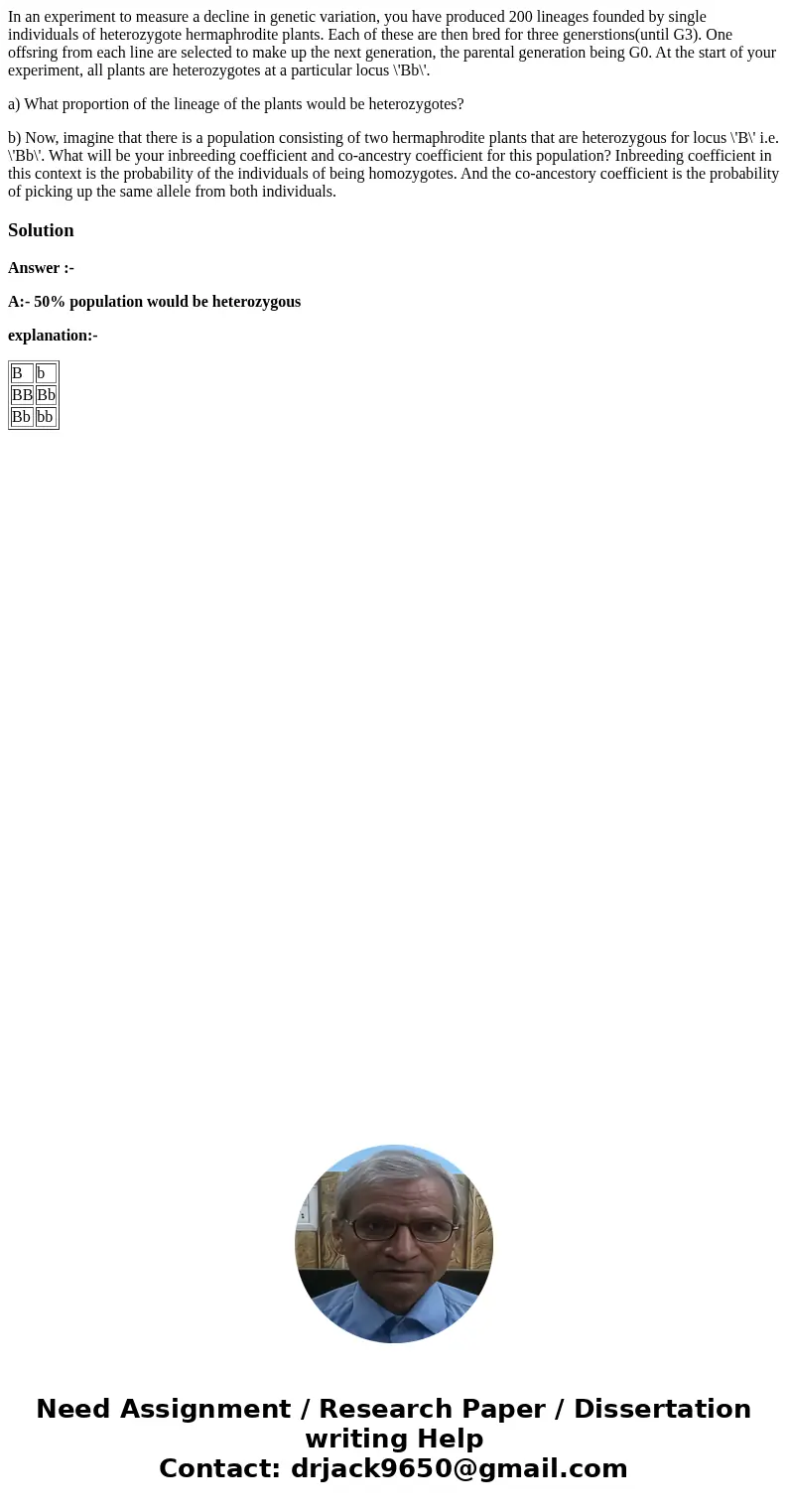In an experiment to measure a decline in genetic variation y
In an experiment to measure a decline in genetic variation, you have produced 200 lineages founded by single individuals of heterozygote hermaphrodite plants. Each of these are then bred for three generstions(until G3). One offsring from each line are selected to make up the next generation, the parental generation being G0. At the start of your experiment, all plants are heterozygotes at a particular locus \'Bb\'.
a) What proportion of the lineage of the plants would be heterozygotes?
b) Now, imagine that there is a population consisting of two hermaphrodite plants that are heterozygous for locus \'B\' i.e. \'Bb\'. What will be your inbreeding coefficient and co-ancestry coefficient for this population? Inbreeding coefficient in this context is the probability of the individuals of being homozygotes. And the co-ancestory coefficient is the probability of picking up the same allele from both individuals.
Solution
Answer :-
A:- 50% population would be heterozygous
explanation:-
| B | b |
| BB | Bb |
| Bb | bb |

 Homework Sourse
Homework Sourse